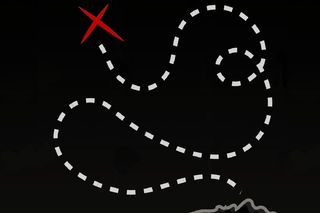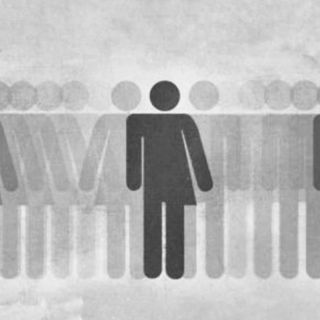
On Hunting for, Finding, and Losing the Elusive G Spot
“I don’t believe in the G Spot, but I also don’t deny its existence.”

“I don’t believe in [it], but I also don’t deny its existence.”
Out of context, that line holds true for God, ghosts, aliens, the Loch Ness monster — you name it. Arguably, however, it is most apt in the context it was said in: as an answer to the question, “Have you ever found your G Spot?” Every single facet of the seemingly magical area which can allegedly elicit earth-shattering, mind-bending orgasms for women through penetration is yet to be conclusively determined — where it is, what it does, how to find it, and even whether it exists at all. The science behind it all is inconclusive at best, desperate at worst (even after nearly seven decades of research), but here is what we (mostly) know for sure (kind of).
The G Spot — named after Dr. Ernst Gräfenberg who first wrote about it in 1950 — is a bean-shaped spongy tissue located about one to two inches inside the vagina, on its front wall. Well, ish. Technically speaking, it’s not really in the vagina and it’s not really one structure either — it’s more of an area, a region. It’s best stimulated by touching the front wall of the vagina but doesn’t exist as an area on the wall itself (which explains why the many studies that failed to locate it visually and then concluded that it doesn’t exist).
Researcher Emmanuele Jannini and his team probably came the closest in explaining where the G Spot might lie, in 2014: a vaginal area called the clitourethrovaginal complex. If that sounds like three different parts of a woman’s anatomy, it’s because it is. Jannini believes that the G Spot lies in an area which may include part of the front vaginal wall, the urethra, the female prostate gland, surrounding muscles and tissue, and even parts of the clitoris —if it exists.
According to a comprehensive 2012 review of nearly a hundred surveys, observational studies and studies where researchers have tried to physically visualize the G Spot, “without a doubt, a discreet anatomic entity … does not exist.” However, the review also concedes that this is not a “1000% conclusive”; that scientists may find something they missed with the help of new technology; that a similar erogenous zone in women has been written about since before Gräfenberg, in the Kamasutra and Jayamangala scripts dating back to 11th century India; and, that women from nearly 30 surveys reviewed believe that it does, in fact, exist.
“Oh, it definitely exists,” S.A., a Mumbai-based 23-year old journalist, says. “Some partners [and I] have had luck with the G Spot but only for a second or two. It felt, well, very good to say the least. [But] we could never find it again. All our attempts at hitting the right spot would be just for vain. It’s quite annoying actually. Once you find it and then when you lose it — arrrgh, I hate it.” Her frustration is echoed back to her socially; “Porn has royally fucked all our sex lives. It set [the G Spot] on a pedestal which is quite unrealistic and far-fetched,” she says. Most of her female friends have been unable to find it and have given up, while some find it after a lot of patience, practice and instructing the partner.
The common consensus on how to find the G Spot is a rather creepy ‘come hither’ movement with a finger, so as to feel the front vaginal wall until the stimulator feels a texture that is less spongey and rougher than the rest of the vaginal canal. The spot can also be stimulated through toys, or through intercourse — and that last bit is where the G Spot has become less about women’s pleasure, and more about recouping the pornographic heterosexual myth of the ‘vaginal orgasm’, where men are directly in charge of bestowing a life-changing orgasm (unlike any other) through intercourse exclusively, going against what most women began claiming since the sexual revolution in the 1960s and 70s — that they don’t cum from penetration, only clitoral stimulation.
“I wasn’t sure what sex was like but I had heard about the G spot even before I had hit puberty!” Rimhim, a 26-year-old brand strategist from Bengaluru says, pointing to the amount of material dedicated to it even today in ‘”women’s” magazines, which is also where she first read about it. “Before I encountered it, it felt like this thing that elevated your whole sense of being to a whole other level. And it would give you a new sense of purpose when it came to sex- is how most articles made it sound, she says, adding, “It’s alright. I still prefer the clit.”
Rimjhim first experienced her G Spot when a partner was “very intent on making sure he found it”, and he succeeded. “It felt like a bit of an achievement for both of us. I was impressed. I did orgasm. I would say every orgasm is different and this was too. I felt like I was flying, to be honest,” she says. Since then she’s been with many partners who have found it without much effort but wishes she could find and stimulate it herself too when she’s masturbating. She quickly adds, “Though I do think it’s also because I prefer clitoral orgasms when I’m masturbating, is why I don’t find it alone.”
Related on The Swaddle:
The Importance of Orgasms, from Women Who Don’t Have Them
S.T., a 26-year-old PhD student living in the United States, however, has taken matters into her own hands. She first read about the G Spot in “probably some article in Cosmo at the dentist’s office” and first encountered it when her partner found it “completely accidentally”. Describing her orgasm as being “a lot more intense” and different from a clitoral orgasm, she says, she has learned to stimulate it herself after the “happy accident” the first time, and can now easily find it at will.
Admittedly, women seem at a lot more ease about finding (or not finding) their G Spot than science is, almost as enthusiastic and sincere as men are to find it. “It’s pretty much two broad areas from my experience. The clit or much deeper in,” G.S., a 35-year-old male working at a Delhi-based startup, says. “There are different things that help. Sometimes it’s, for want of a better word, the roof. I enjoy the trial and error, to be honest, especially if it’s going to be a discovery for both of us.”
For T.T., a 35-year-old doctor based in Boston, it also came down to trial-and-error, when he first strategically set out to find the G Spot in his partner: “It’s not so hard to find; it’s woman-dependent,” he says when asked if he knew exactly where it was and if he could find it again. He isn’t sure whether she orgasmed though, despite G Spot orgasms being famed for producing very powerful, unmissable female orgasms that often result in a thick semi-white liquid-like cum, or even with the woman squirting. “But she did feel great. I think it was a mix of sexual and emotional feelings,” he adds, having seemingly disavowed himself of the cultural obsession around orgasms being the end all, be all of having sex — in the fifteen years since he first learned about the G Spot online when he was in class 10.
“I think they did orgasm, more often than not,” G.S. says, explaining that, regardless, he derives pleasure from the woman enjoying, her reactions and the sounds she makes. He has found the G Spot by communicating with his partner: “I’ve tended to ask if I have [found it] and if I was doing it right,” and, through experience “of both people involved — the woman knowing her own body and the man, knowing where the best stimulus comes from.” Some of the times he has successfully stimulated the G Spot have been “happy accidents,” he says, sharing that he first found out about it in school. By the time he was in college, he had already read Dr. Gräfenberg’s work.
Despite this omnipresent narrative about finding the elusive G Spot, for both men and women, lest they feel like they’re missing out or not having the best sex they can, G.S. says he didn’t feel “too much pressure really but [the G Spot] has assumed mythical proportions.” He’s not one to watch porn — he’s never enjoyed it, he says — but agrees that pop culture has “deified it [as] the Holy Grail.” He accepts: “There have been times I haven’t found it and that can be frustrating.”
Related on The Swaddle:
Heterosexual Sex Has a Problem: Half of the Participants Are Faking It
So, what’s the final word on the urban legend that the G Spot has now become, as scientists, and men and women scurry to locate it? Most accurately, the answer is: women, vary. “There may be one or may not be one or maybe some women have them and some don’t. All are possible. What we do know is that plenty of women enjoy stimulating that spot, and they should go forward and do that and have fun with it,” Amanda Marcotte writes in her essay for Slate. But if finding the G Spot takes away from the pleasure of having sex, as it did for Mandy, a 24-year-old Delhi-based creative producer, then it’s best to skip it altogether.
“Initially there was a concerted effort to find it when I started having sex. But later I understood that sex is not a checklist, it’s an experience. I can’t draw a map for my G spot’s location because I’m not sure if that destination exists,” she explains. Succinctly summarising exactly where science has reached so far in terms of understanding it, she says: ” I don’t believe in the G Spot, but I don’t deny its existence either.” She isn’t sure she’s encountered it yet — sometimes she experiences orgasms that are gone in “less than a second”, and sometimes she experiences stronger and longer orgasms. “Maybe those times I hit the G Spot (if it exists) or maybe not … It’s a blurry answer, she says.
As comfortable as she is with not having clear answers to the G Spot, not everyone seems to be as comfortable. There is a need — especially among scientists studying women’s sexuality — to find the answers now, to solve the mystery that is women’s pleasure now, but that’s just not how science works. Magazines, pornography and erotica, poor sexual-education and the resulting misinformation, and pop culture have only added to the urgency of finding the magic button which will seemingly unravel the deeply locked secrets and mysteries of women’s pleasure — a narrative that has sustained innumerable storylines. “I first heard about the G Spot in one of the episodes of Sex and the City, as a teenager. Later on, it was in some erotica I read. Also, [through] believable insights from my apparent sexpert friends,” Mandy says, adding that at the beginning when she started having sex, there was too much pressure. “[A] few friends used to tell me how amazing its to hit the G Spot and what-not … that it’s the ultimate pleasure point. Even [a] few partners I had were too focussed on finding it…like it’s some sort of achievement,” she says.
If we began with suppressing women’s sexuality as taboo, as something to be regulated by men, then today, we have swung to the other extreme of the pendulum where we’re just as obsessed with (regulating) women’s sexuality (no one is writing as many blogs, articles, books, research papers on men’s prostates, the male version of a G Spot), except now its highly scrutinized by scientists asking women to jerk off in front of them while they measure their brain activity and bring their pleasure down to an exact science, so that they can ‘improve’ their sexual function. Capitalism and consumerism have now joined the search party for the gynecological UFO that is the G Spot, making it a multimillion-dollar industry. There are countless G-spot vibrators and other sex toys and G Spot specific books and how-to-videos. Some doctors now offer injections and other procedures to enhance women’s sexual experiences (as if the current, popularly accepted clitoral model of orgasming isn’t good enough) or to “augment” the G spot.
But what lies beneath this desperation to find the G Spot — a way for women to orgasm powerfully, which necessarily needs a partner, as opposed to clitoral stimulation which women are increasingly opening up to? Could it be fear? “In a way, I have to wonder if it’s really about sex at all, or if these fantasies are just another way to express cultural fears that feminism [and by extension, women freely experiencing sexual pleasure through masturbation] somehow means that women don’t need men anymore,” Marcott writes.
“It’s not like people pressurize you, but the fantasy created around the G Spot makes you feel the fear of ‘Do I have a problem?’, ‘Why doesn’t sex feel like they say it should?’ and then, ‘Is it because I can’t find the G Spot?’,” Mandy says. “Thankfully I came out of these thoughts. And yeah, I feel normal now.”
Pallavi Prasad is The Swaddle's Features Editor. When she isn't fighting for gender justice and being righteous, you can find her dabbling in street and sports photography, reading philosophy, drowning in green tea, and procrastinating on doing the dishes.
Related


Is the Nobel Prize on Its Way to Being Outdated?
